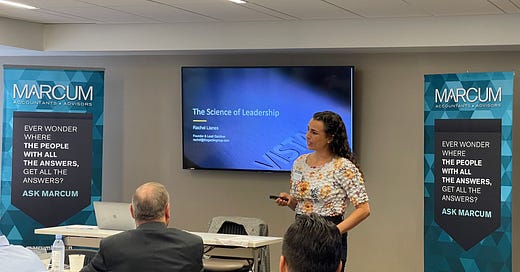As a performance consultant for c-suite executives, one of the most common complaints I hear is “my direct reports aren’t performing at the level I need them to.”
The solution I offer my clients often perplexes them. I caution leaders against putting their employees on PIPs (i.e. performance improvement plans). From my research, that often exacerbates the issue because 9 times out of 10 expectations were not clear and quantifiable from the start. Failing to define what success looks like for any particular position within a company is a failure of leadership. Plain and simple.
People cannot be held accountable to undefined or ambiguous performance metrics. If you, dear reader, have ever been held to a standard you did not know existed, in your personal or professional life, you have tacit knowledge of how demoralizing this can be.
So, instead of validating c-suite frustrations, I challenge my clients to take their people’s “suboptimal” performances personally. If they’re able to own the issue, I then advise they give their direct reports bold goals, or what psychologists call “hard, high goals.”
Hard, high goals are ambitious objectives that push individuals beyond their comfort zones and require significant effort and dedication to achieve. These goals are typically challenging, yet attainable with the right level of commitment and resources.
This is the first step to transferring performance ownership onto the employee. It may seem counterintuitive to give an under-performer bold goals, but the data speaks for itself.
Organizational psychologists have been studying motivation and performance for decades. In the 1960s, researchers Edwin Locke and Gary Latham found that goal setting was one of the simplest ways to enhance both motivation and performance. Across dozens of studies, they found goal setting increased performance and productivity by 11 - 25%. That’s quite a jump. In fact, that stat is worth lingering on for a moment. Consider the following question:
What would your business look like this time next year if each of your employees increased the quality and quantity of their output by 11 - 25%?
My research and the research of those who have come before me suggests you - as their leader - have the power to make that future fantasy a reality.
What are the mechanics of this motivation miracle? Bold goals require, if not inspire, attention and persistence. Turns out, people love a target. Giving them something challenging to aim for helps shift people out of apathy and into action. So, if you’re not happy with an employee’s output, I encourage you to offer them some hard, high SMART goals and see what happens. Here are some examples:
Software Engineer: lead a cross-functional team to deliver a major feature set within 9 months
Escrow Officer: reduce escrow processing time by 20% within 6 months
Head of Manufacturing: increase production capacity by 30% within 18 months
Plastic Surgeon: increase revenue from cosmetic procedures by 25% within 12 months
If they belong on your performance-driven bus, they will rise to the occasion and demonstrate the drive and excellence you seek to see in them. If they don’t, you get to start the process of seeking out someone who will. Regardless of the outcome, it’s a win.
What To Do With This:
Do an Expectations Audit by reviewing your direct reports’ job descriptions (JD). Are there KPIs imbedded within them? Are they clear and quantifiable?
Compare your JD for the position to chatGPT’s JD for the position. Is anything missing? Is anything there that no longer belongs? Refine and revise the JD.
Schedule a time to meet with your direct report (DR) to review his/her JD, RnRs, and KPIs.
Meet with your DR and end the meeting with a Bold Goal. Strategy Tip: highlight the alignment between the bold goal’s outcome and your DR’s personal values. For example, if you know “time with family” is a core value, paint a clear and compelling vision of how achieving this bold goal is in direct alignment with your DR’s ability to spend more time with family. This inspires commitment versus mere compliance.
If you’d like to discuss these topics further, or learn how I can help you execute any of the above, reach out to me at rachel@thegardingroup.com



